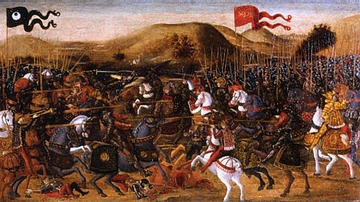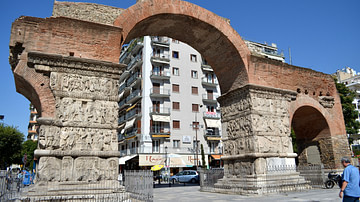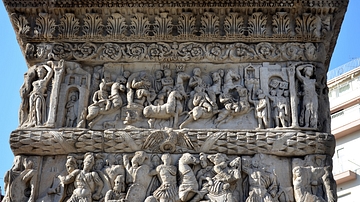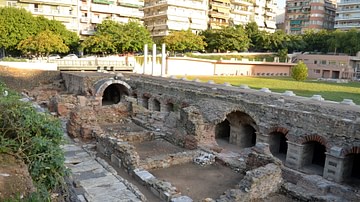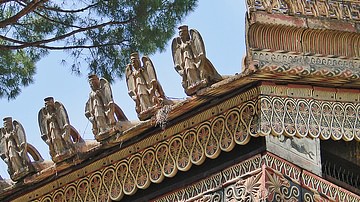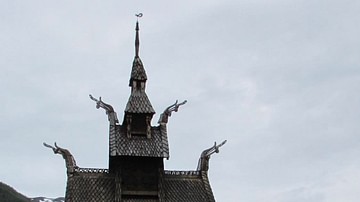Illustration
Grave goods from a male burial in the necropolis of Pydna, c. 330 BCE.
Archaeological Museum of Thessaloniki, acc. no. Py4285.
The ancient city of Pydna (near today's small town of Makrygialos) was a semi-independent harbour by the Thermaic Gulf in the Aegean. Although a Greek city today at the heart of Central Macedonia province, the city recognised the sovereignty of Macedonian kings while keeping mostly autonomous control of its affairs. A few attempts by the Greeks to capture the city in the 5th century BCE never resulted in its transition from Macedonian to Greek cultural territory. Eventually, Philip II of Macedon in his sweeping campaigns across the Greek world as part of leading the forces of the Amphictyonic League in the Third Sacred War conquered Pydna in 357 BCE. After the death of Philip's son, Alexander the Great, in 323 BCE, Alexander's mother Olympias took his infant son and heir, Alexander IV, under her protection and joined the War of the Diadochi on his support. They were all captured by one of the fiercest claimants of Alexander's throne, Cassander, in Pydna in 317 BCE, who executed Olympias, imprisoned Alexander IV and his mother, and married Thessalonike, Philip II's daughter from Nikesipolis of Pherae. Pydna was also the scene of Macedonian final resistance against Rome in 168 BCE. The city survived well into the Byzantine era.
The necropolis on the north of Pydna has given out several Macedonian burial cist-chambers. The Macedonians used gilt silver figurines of deities – here representing Zeus, Artemis, and Athena – as grave goods to decorate the burial caskets that preserved the bones after cremation. The gold crown of oak leaves, the ceremonial headgear demonstrating the owner's significance, was placed on the casket, which in this case was made of wood and therefore did not last.
About the Author
Cite This Work
APA Style
Choubineh, N. (2024, October 01). Macedonian Burial Casket Decorations from Pydna. World History Encyclopedia. Retrieved from https://www.worldhistory.org/image/19502/macedonian-burial-casket-decorations-from-pydna/
Chicago Style
Choubineh, Nathalie. "Macedonian Burial Casket Decorations from Pydna." World History Encyclopedia. Last modified October 01, 2024. https://www.worldhistory.org/image/19502/macedonian-burial-casket-decorations-from-pydna/.
MLA Style
Choubineh, Nathalie. "Macedonian Burial Casket Decorations from Pydna." World History Encyclopedia. World History Encyclopedia, 01 Oct 2024. Web. 15 Apr 2025.



